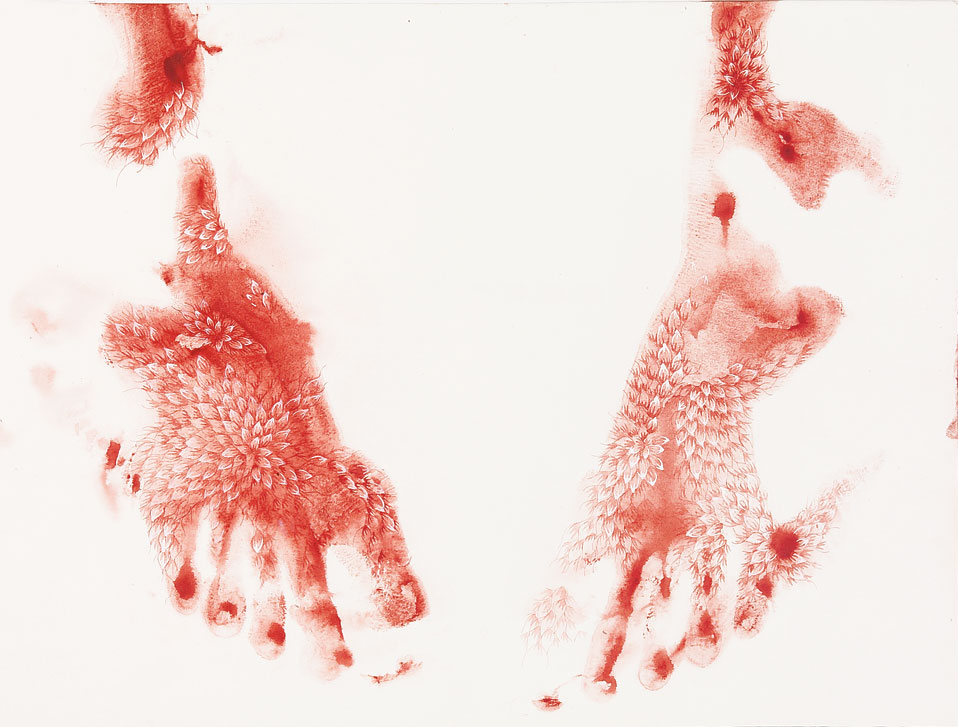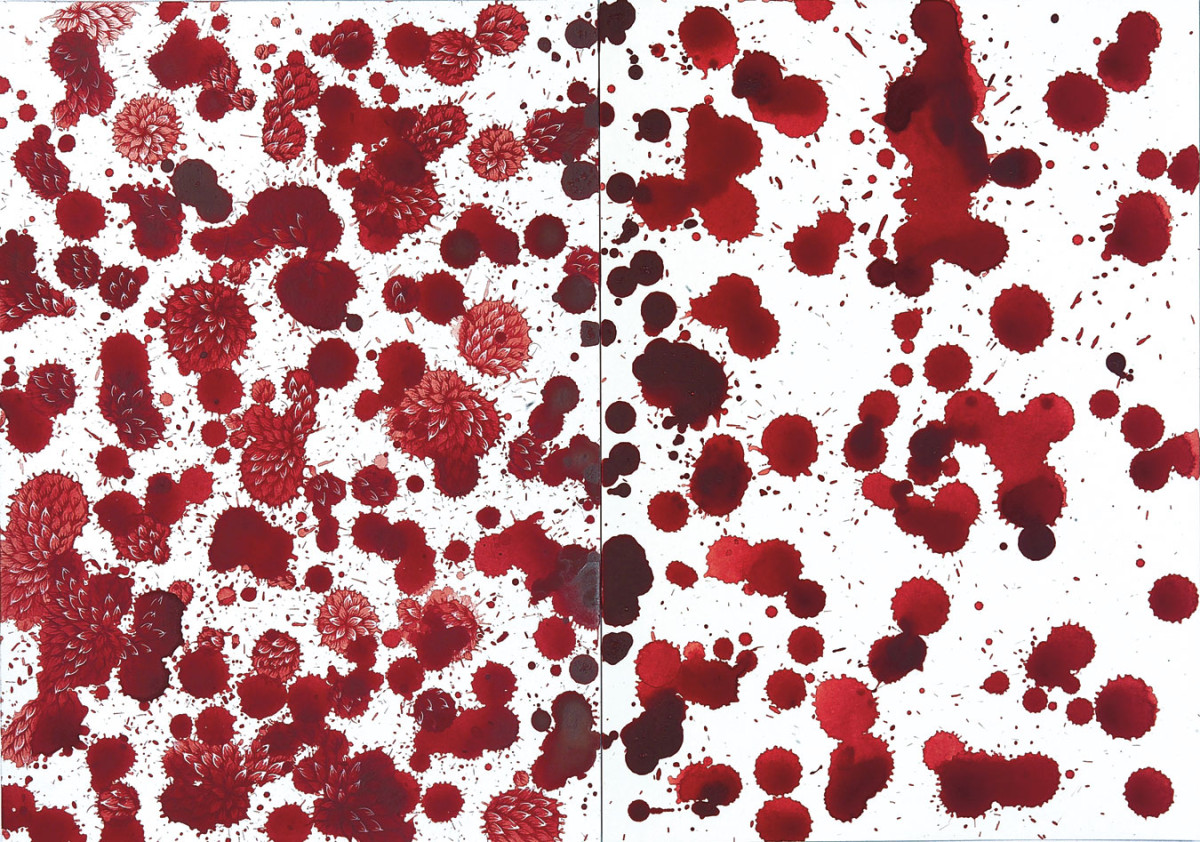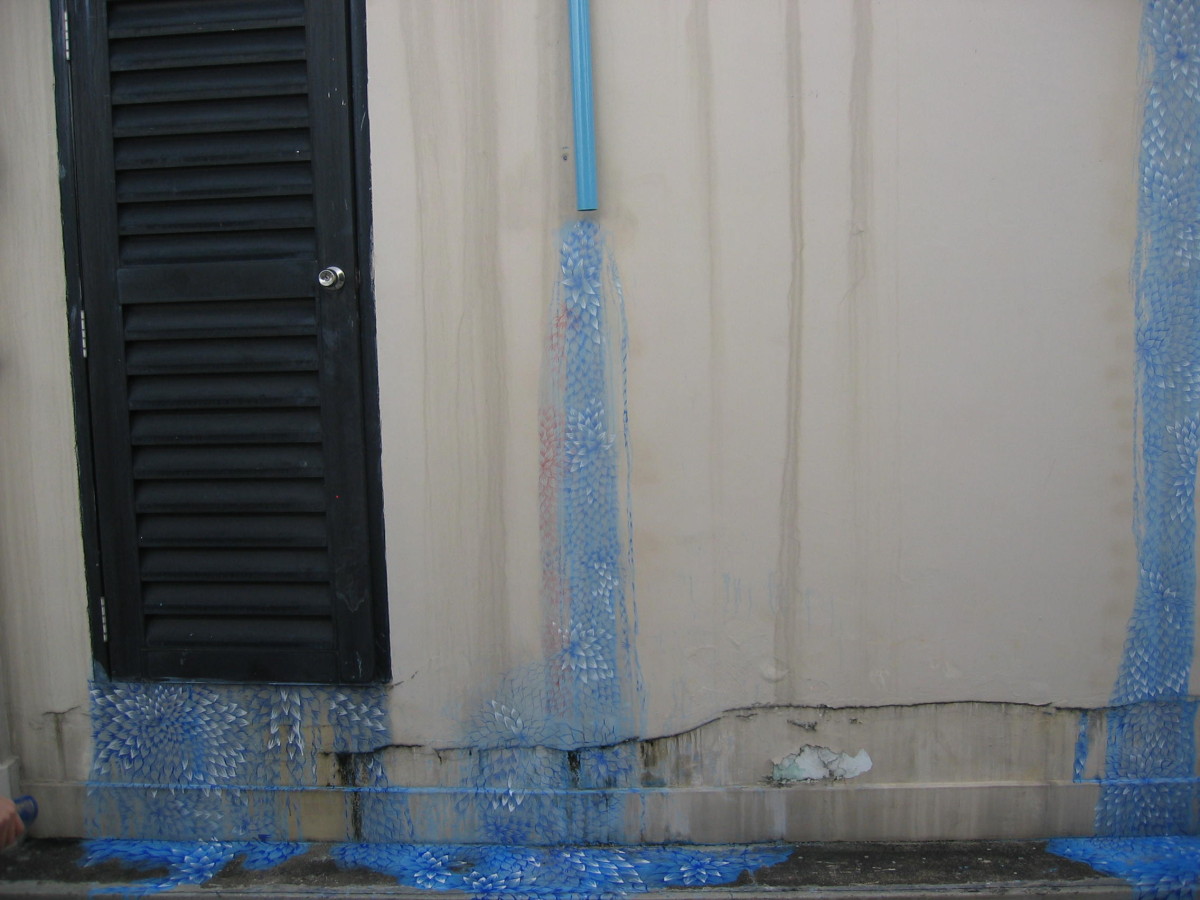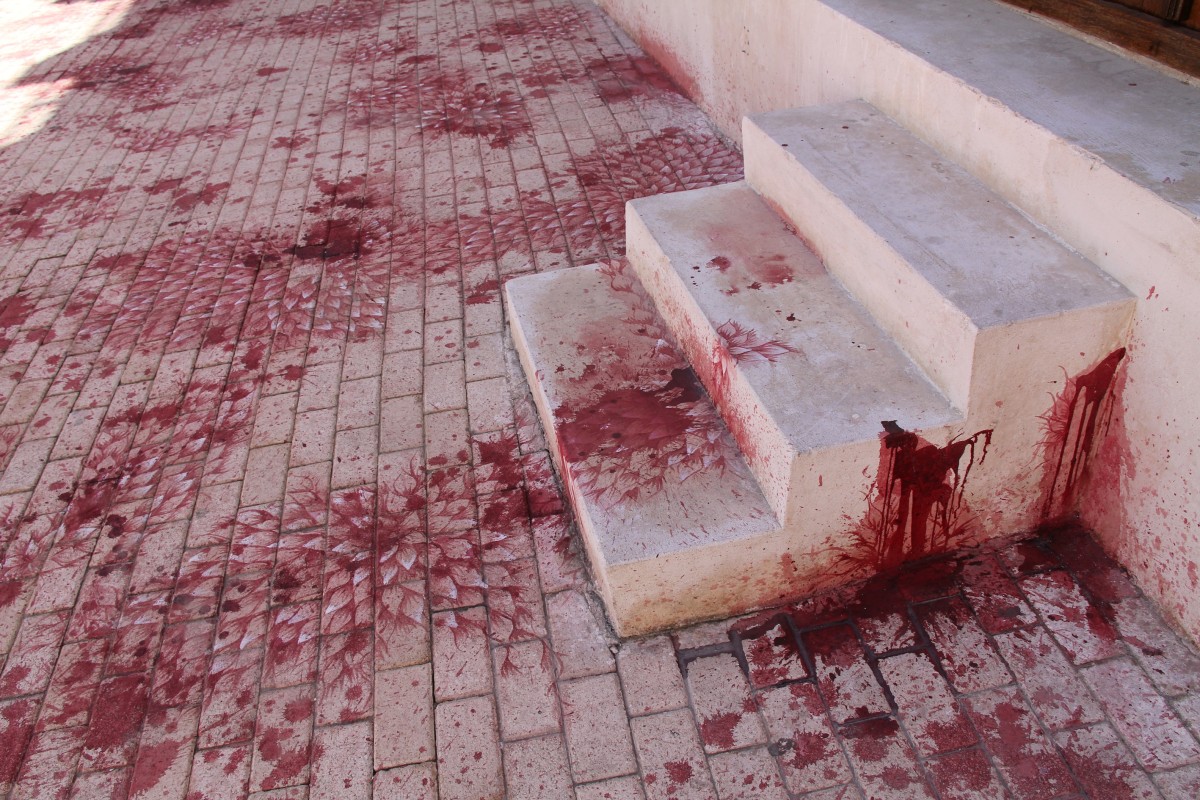Sabine B. Vogel: When did you start using ornament in your pictures?
IMRAN QURESHI: I graduated from the National College of Arts in Lahore (1990-1993) with a specialization in miniature painting. Ornamentation and decoration has always been an integral element of traditional miniature painting. At the National College of Arts, during the course of our education, we have to copy a certain number of reproductions of historical miniature paintings, and learn different ways of decorating an image through ornamentation. This is undertaken to master the traditional technique in its most basic form.
 In the final years, students move towards depicting their personal and social issues by using their own vocabulary within the context of this traditional art form. Historically, miniature painters would create an image and then would undertake the decoration of their paintings with ornamentation, which included the creation of detailed and exquisite decorative borders around the actual image. I was decorating my paintings with ornamental elements in the works done during the early years, but my approach gradually changed over time. These ornaments were not solely for embellishing the image, there were a multitude of reasons for using these ornamental motifs in my work.
In the final years, students move towards depicting their personal and social issues by using their own vocabulary within the context of this traditional art form. Historically, miniature painters would create an image and then would undertake the decoration of their paintings with ornamentation, which included the creation of detailed and exquisite decorative borders around the actual image. I was decorating my paintings with ornamental elements in the works done during the early years, but my approach gradually changed over time. These ornaments were not solely for embellishing the image, there were a multitude of reasons for using these ornamental motifs in my work.
In the recent series of Red abstract expressionist paintings I have sought to combine the imprints of bodies with splatters of paint, which are reminiscent of blood but on closer inspection are always full of ornamental foliate detail that represents life. There is an almost paradoxical quality between violence and beauty, life and death existing on one surface.
SBV: Did you use these floral, leaf-like, creeping ornaments right from the beginning?
IMRAN QURESHI: These forms have always been part of my oeuvre, but the conscious reference to life began in the late 1990s. It developed in 2001 during a scholarship in India. I created my first site-specific installation by applying ornament directly to the floor and the walls in an architectural space. The work was entitled Coming Down to Earth.
SBV: Did the ornamentation serve as decoration or as autonomous pictures?
IMRAN QURESHI: Although they convey a strong symbolic meaning, these elements also functioned as decoration. On the other hand, if the ornamentation is only added as an embellishment, the work of art becomes lifeless. The same holds true for the gold leaf surfaces that I have used several times, for example in my Portraits series. The first impression is that of exotic and decorative elements. But when I paint blood drops on these decorative surfaces, the gold takes on a new meaning. The resulting contrast imbues each element of the painting with a more powerful language, and all forms become engaged in a dialogue. It therefore plays with the tradition but leads to a reflection about our life and time. This ornamentation therefore becomes representative of the society I live in. It reflects a multitude of aspects. These might be cultural, social, political – and could at the same time be humorous.
SBV: Is your ornament directly connected with Islamic art, too?
IMRAN QURESHI: Not directly, although it is of course routed in certain traditions of miniature painting. But it has evolved into my personal language, and it is constantly changing – I do not adhere to a model anymore.
SBV: In the last years, you have mostly applied ornament in blue. In your most recent works it is red – like blood. How did this come about?
IMRAN QUERSIH: In August last year, a furious crowd of people committed a terribly brutal lynching which resulted in the murder of two young innocent brothers in the small town of Sialkot in Pakistan. It was filmed secretly and was broadcast on national television – leading to shock and outrage.
The impression that people had become quite indifferent was challenged and it bought forth the humanity in people, The reaction to this terrible murder, the sympathy, the protests and the demonstrations against the cover-up of the whole affair, raised the beacon of hope again.
SBV: Is your ornamentation a symbol for these hopes?
IMRAN QURESHI: Yes, these forms stem from violence, they are mingled with the colour of blood, and at the same time this is where a dialogue with life, with new beginnings. In the larger work, the imprint of the whole body, the ornamentation grows from the body as a certain kind of revolutionary hope.
I do revisit the traditional miniature, and just last year I also painted simple portraits of friends in the historic figurative style. After continually moving towards deconstruction or expansion of a miniature painting by splattering paint and creating shapes by imprinting the body, I also keep revisiting tradition. I have retained the foundation of my painting. I still remain connected to the tradition – and my experiments with abstract miniatures in turn also become part of it.
SBV: Your new work resembles Yves Klein’s body paintings, but also of Jackson Pollock’s drippings – do you see any connections to these works?
IMRAN QURESHI: I know these works. When I began the red paintings after the shock of this lynching, I did not think of their works at all. Both methods are used in a completely different context in my work – and they are aggressive in a completely distinct way. Yves Klein certainly registers the aggression of the body in his imprints,too, but with a different result altogether. When I started with the imprints of hands I wasn’t thinking at all about using the whole body. That emerged later during the process of the work. The video footage showed the bodies of two young, strong men who were made lifeless by this brutality. They were dead, and the way the crowd treated their bodies in public without any respect was awful. I wanted to paint two such life-sized bodies to directly confront the viewer. I started looking for a young man as a model, but at first nobody wanted to work as a nude model. I finally found someone, but I also used my own body. However, the imprints and the drippings are not so much a method to create an image as a form, a visual language in order to say something about our time.
SBV: The paintings in these series bear unusual titles – are they directly connected to the murder?
IMRAN QUERSIH: The titles of the Red blood paintings stem from a revolutionary poem by the Urdu poet Faiz Ahmed Faiz (1911–1984), translated by Shoaib Hashmi. His references to the social and political issues of his time are so similar to my paintings, and I saw so many connections, that I selected my titles from this poem.
SBV: Thanks a lot for the interview!
Interview for the catalogue of „Political Patterns“, ifa Gallery Berlin, Stuttgart, 2011. curated by Sabine B. Vogel





